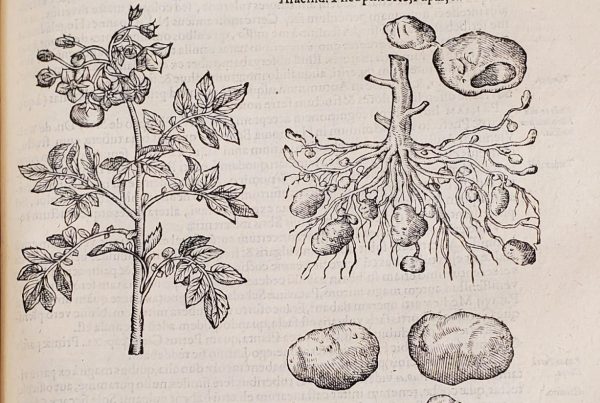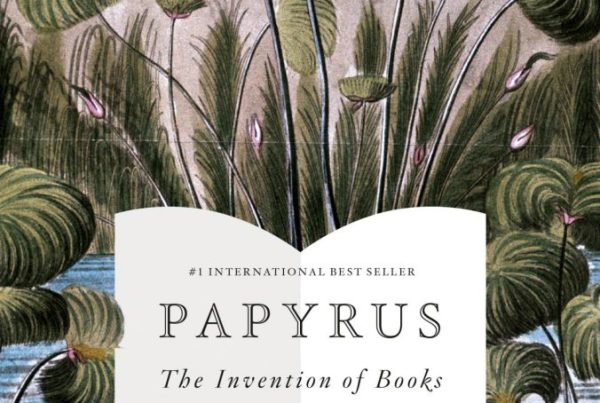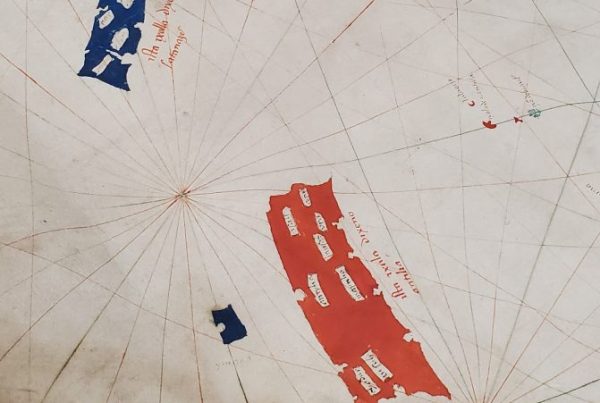By Anne Good, Assistant Curator
It is fascinating to see the ways that historical interpretation has changed over time – sometimes due to the discovery of new materials, and sometimes because of societal changes that also altered the perspectives of historians. Ideas about the explorers of the so-called “Age of Discovery” are a case in point. Formerly valorized in American culture, explorers now hold a much more ambiguous, even negative, status. So much more is known now, both about many of the individual men (and some women) and about the indigenous cultures they encountered, that it would be extremely difficult to maintain a heroic idealization of them, as was the case in the nineteenth and early twentieth centuries. Historians today seldom write the histories of famous men, but instead focus on the voices of the underrepresented, the oppressed, the mistreated, or just ordinary people. Many historians, furthermore, no longer feel comfortable even referring to an Age of Discovery, and instead call it the Age of Exploration or the Age of Contact.
Apart from the practices of professional historians, it is also interesting to consider the ways that ideas about historical events and people are used, and also change over time, in popular culture. My father-in-law is an aficionado of old cars and old car advertising. He recently shared with me a series of advertisements from the 1930s, issued by the Cadillac motorcar company, and published in the Saturday Evening Post, which link innovations in automobile technology to the achievements of famous explorers.
The advertising slogan was: “Leadership Rests on Achievement…and Leaders are Made by Deeds.” Images of beautifully designed, new Cadillacs were then paired artistically with explorers in heroic poses. Each full-page add described a Cadillac “first” and “best” in some detail – but, interestingly, the explorer portraits were only labelled with names, as though to indicate that anyone looking at the advertisement would know enough history to be able to make the connection.
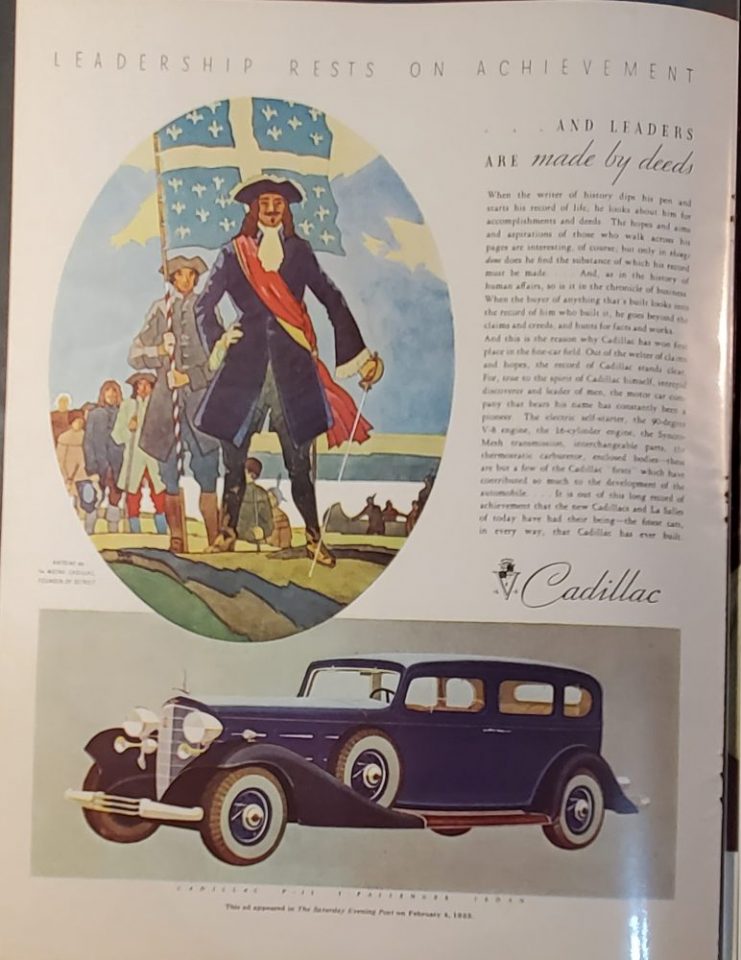
The “Sieur de Cadillac” is sometimes credited as the founder of Detroit. From the private collection of A. Ronald Good.
The first advertisement shows Antoine de la Mothe, Sieur de Cadillac (1658-1730), with the flag of the French king unfurled — apparently caught in the act of founding Detroit. Unfortunately, I have not yet been able to track him down in the materials in the Bell Library, though I continue to search. A biography of Cadillac published in 1931 referred to him as The Knight Errant of the Wilderness, but a more recent assessment of this trader in alcohol and furs, states: “A critical examination of the thousands of pages of archival material relating to Cadillac inevitably leads the historian to the conclusion that he most definitely was not one of the ‘great early heroes’ and probably deserves to be ranked with the ‘worst scoundrels ever to set foot in New France.’” (Dictionary of Canadian Biography)
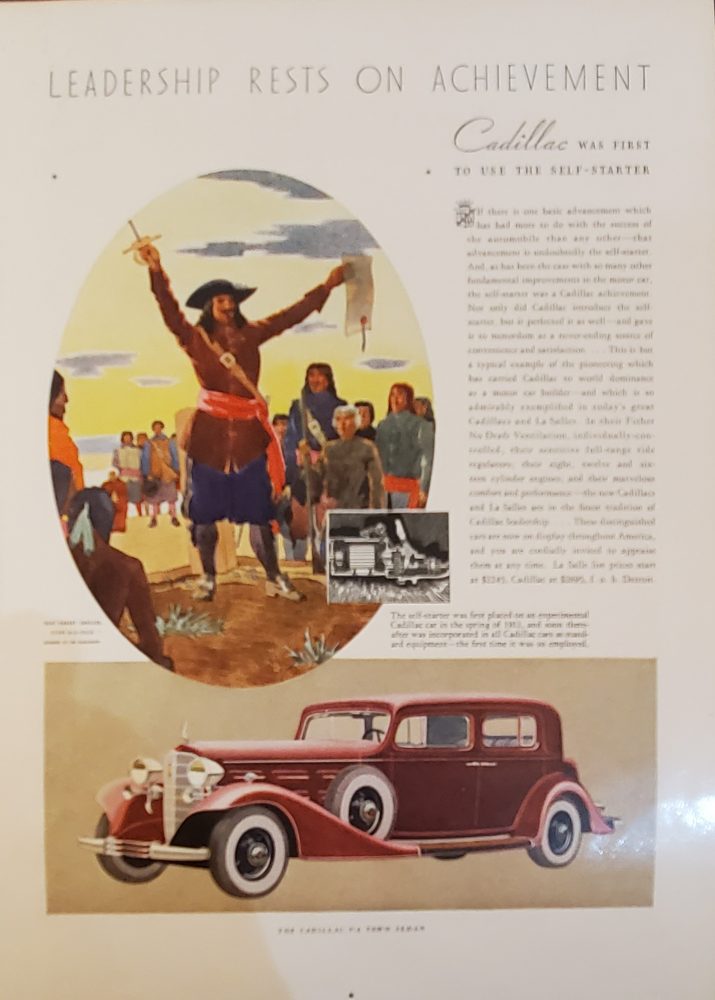
The Sieur de La Salle claims territory on behalf of the king of France. From the private collection of A. Ronald Good.
The second advertisement shows René-Robert Cavalier, Sieur de La Salle (1643-1687), sword uplifted in one hand, a royal decree in the other, presumably claiming the territory of the lower Mississippi Valley for the French king – La Louisiane, as he named it in 1682. On the right side of the picture, there appears to be a group of settlers, while on the left and lower down, three Native Americans look on, and one of them seems to be kneeling. This is an image that would make many people cringe, if not become enraged, today. It’s also a highly unlikely scene, though undoubtedly, La Salle’s work helped pave the way for settlers from Europe to settle in the Mississippi Valley.
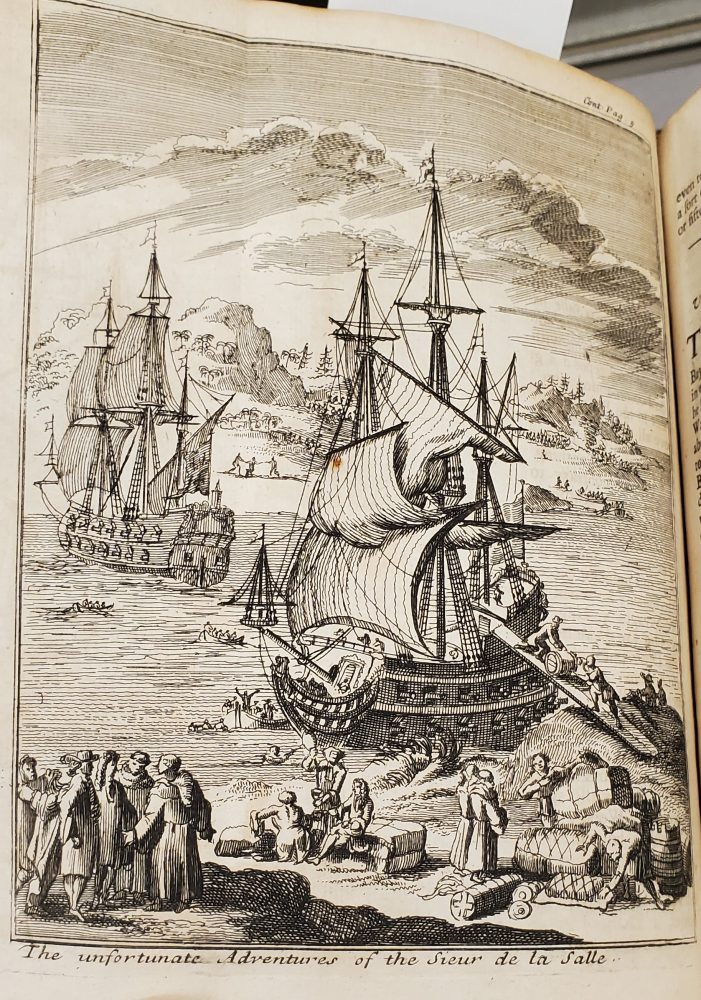
Included in Louis Hennepin’s A new discovery of a vast country in America (London, 1698). Bell # 1698 He1
An autobiographical relation of La Salle’s life and explorations was never published, but there are some accounts by his contemporaries, of which the Bell has copies. During his first journey, which went southward from Canada, starting in the early 1670s, he saw the marvelous Niagara Falls. This remarkable expedition lasted more than 10 years, and after reaching the Gulf of Mexico, La Salle travelled back to Montreal and then back to France to gain funding to establish a colony in La Louisiane.
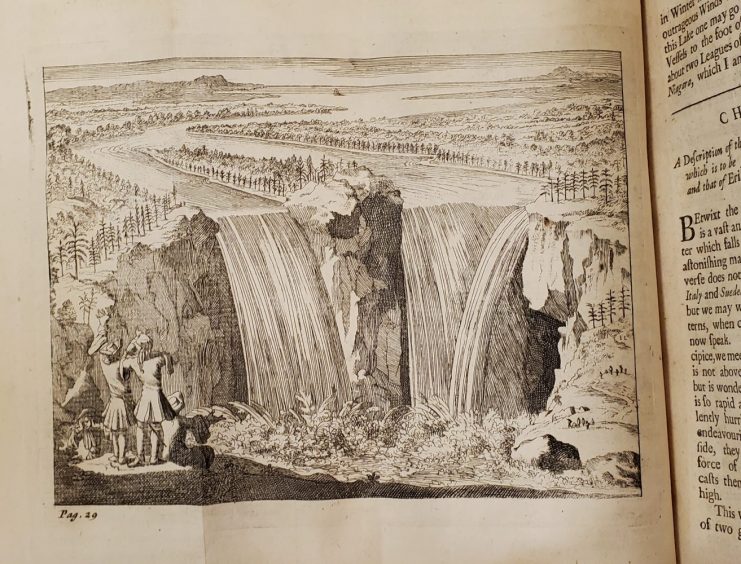
A view of the falls in Louis Hennepin’s, A new discovery of a vast country in America (London, 1698). Bell # 1698 He1.
La Salle was able to raise enough money and interest in France to be equipped to sail back to America with four ships and 300 colonists. Plagued by pirates and bad luck, a group of settlers finally made it ashore near present-day Victoria, Texas. The last remaining ship, La Belle, got stuck in mud and sank, essentially stranding them, probably in 1685. (La Belle was located by archaeologists in 1995, excavated, and reassembled in the Bullock Museum of Texas State History. It is the subject of a fantastic exhibit.) La Salle had intended the colony to settle near the Mississippi River, and he attempted to find the river, on foot, with a small contingent of men on a couple of occasions in the following two years. In 1687, frustrated by bad conditions and little prospect of success, some of his men mutinied. According to accounts published later, Pierre Duhaut shot and killed La Salle; shortly thereafter, all of the remaining colonists were killed by Karankawa-speaking Native Americans. The moment of La Salle’s death was captured in this excerpt from the narrative of Henri Joutel:
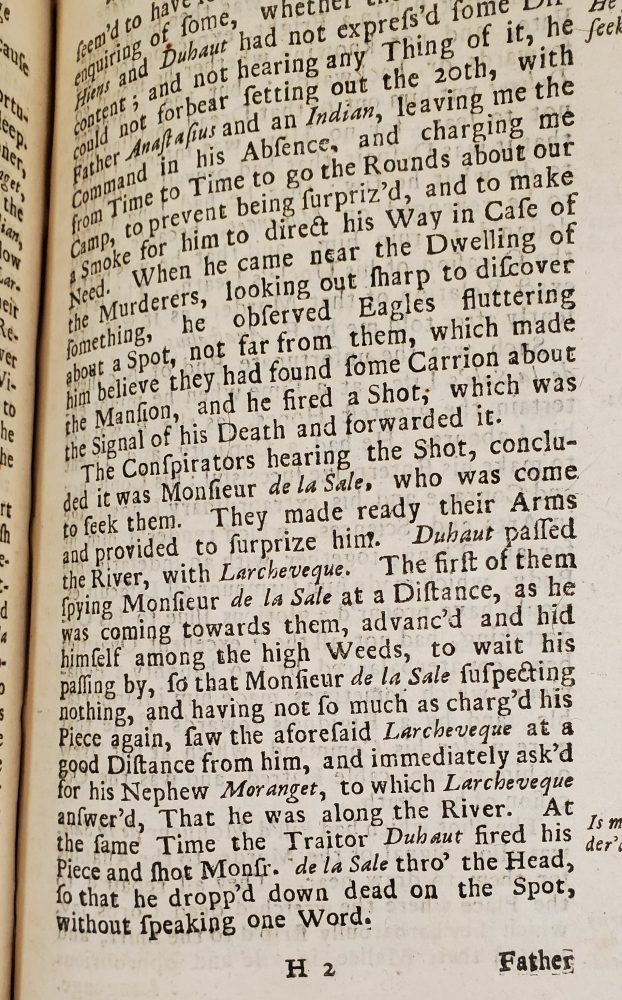
The murder of La Salle in A journal of the last voyage perform’d by Monsr. De La Sale (London, 1714). Bell # 1714 Jo.
The third Cadillac advertisement shows Vasco Núñez de Balboa (1475-1519) in full, shining armor, with a flapping red cloak, sighting the Pacific Ocean for the first time. Even by the standards of the 16th Century, Balboa seems to have been a murderous, treacherous sort of man. He first arrived in the Caribbean in 1501 (less than 10 years after Columbus’s first voyage) in the company of Rodrigo Bastidas and Juan de la Cosa (who designed the first European world map that included the New World discoveries; sadly, the original is not in the Bell’s collection, though we do have an amazing facsimile: call # 1892 fCo).
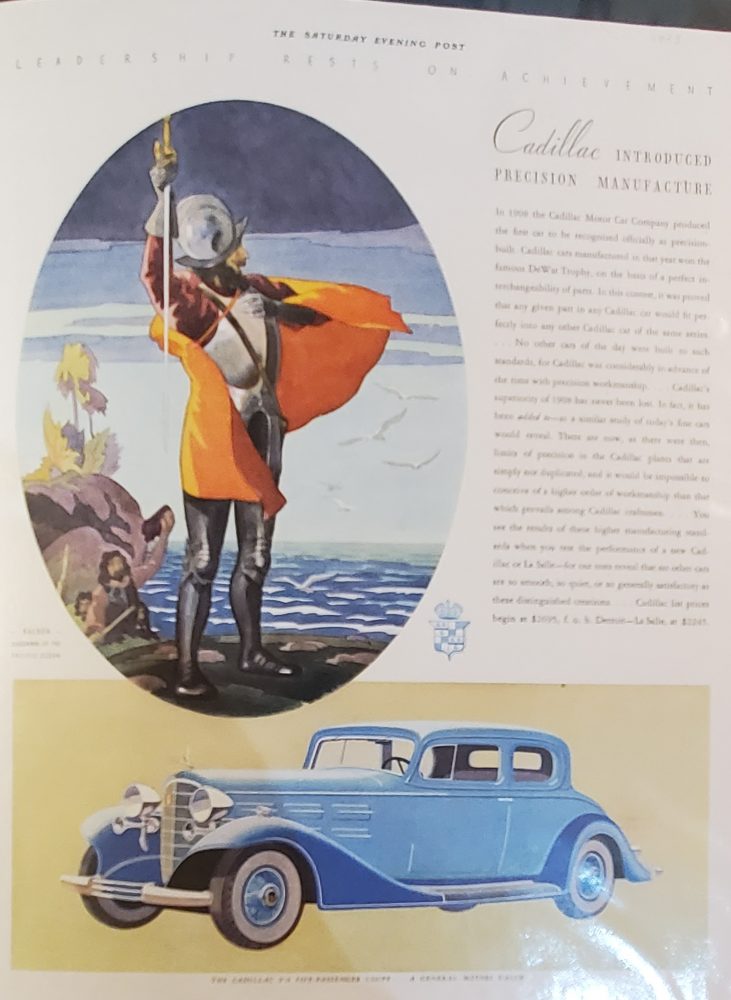
Balboa viewing the Pacific Ocean for the first time, paired with a beautiful, blue Cadillac. From the private collection of A. Ronald Good.
After a short time as an unsuccessful pig farmer on the island of Hispaniola, Balboa’s life became one of near constant travel, scheming, and violent encounters. His intent was certainly to gain riches and fame, and in this period of intense competition among ambitious Spanish “conquistadors,” he was in the midst of the fray. His cruelty abounded both to his countrymen and to indigenous peoples he encountered throughout the Caribbean. Yet, in the estimation of the 16th century, he was pretty successful – founding the settlement of Santa Maria la Antigua de Darien in 1510 – on the sight of a plundered native town – the first Spanish settlement on the American mainland (in modern Colombia). By 1524 it had been burned by local inhabitants and abandoned by the Spanish settlers.
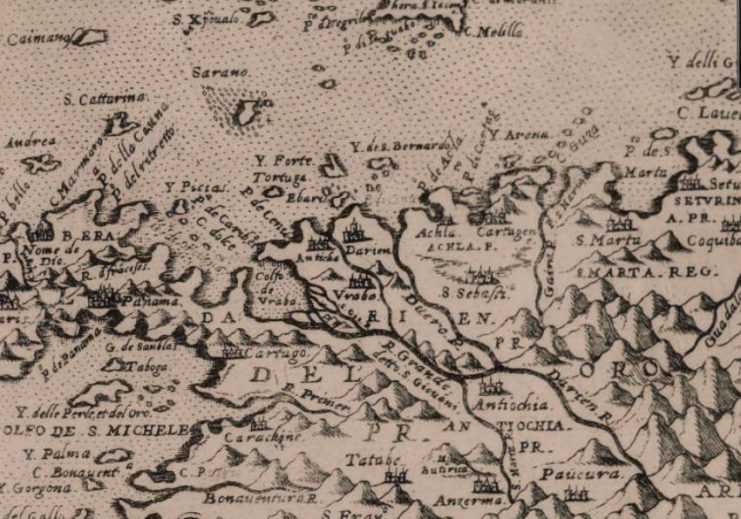
Excerpt from a map of central America, publish in the atlas of Giovanni Camocio (Venice, 1560-1575). A digital version of the full map is available in UMedia.
He is also credited with being the first European to sight the Pacific Ocean (Mar del Sur or South Seas, at the time) in 1513, from a mountain ridge in the isthmus. He and a small contingent of men then marched down to the sea, Balboa waded in with his sword raised in one hand and a picture of the Virgin Mary in the other and claimed it and the adjoining land for the King of Spain. This stirring interlude done, Balboa and his company continued their ceaseless quest for gold and new territorial claims. By 1519, Balboa had fallen out of favor with other Spanish adventurers in the region (including Francisco Pizarro) who were after the same things he was. He was arrested and sentenced to death by beheading. In January 1519, it took the executioner 3 whacks of the axe to complete his commission.
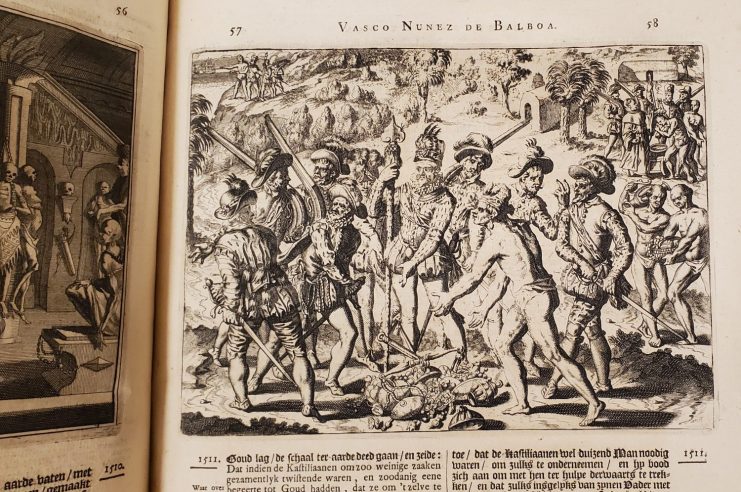
The Dutch publisher Pieter Van der Aa depicted Balboa’s greed for treasure in his translation of an earlier Spanish account. (Leyden, 1706). Bell # 1706 fHer.
The final advertisement features Magellan paired with a sleek, light blue Cadillac Phaeton. Ferdinand Magellan (1480-1521) is perhaps the best-known out of these four explorers. The Strait of Magellan, the navigable sea route between southern Chile and Tierra del Fuego, bears his name. He actually called it the “Strait of All Saints” in 1520, but Emperor Charles V renamed the route in his honor.
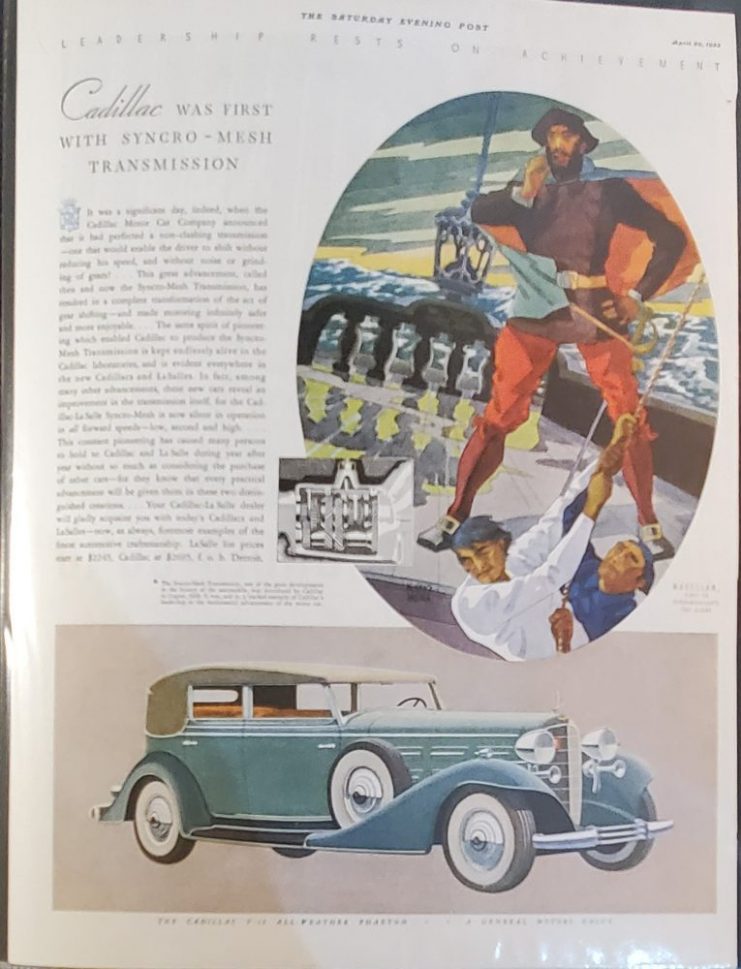
Magellan at sea, paired with a delightful Cadillac Phaeton. From the private collection of A. Ronald Good.

Gerhard Mercator’s depiction of the Strait of Magellan from the atlas of 1628. A digital version of this map may be viewed in UMedia. Bell call # 1628 oMe, vol. 2.
One often still hears that Magellan was the first person to circumnavigate the globe. It would be more accurate to say that Magellan led the first expedition that successfully sailed around the world – travelling westward from Spain in order to reach the east, get spices, and return home. But even this statement obscures the fact that Magellan himself didn’t make it – he was killed in the Battle of Mactan on an island in the Philippine archipelago in 1521. His second-in-command Juan Sebastian Elcano took over the expedition at that point, and eventually completed the voyage. Of the five ships and 270 men who started out on the expedition, only one ship, the Victoria, and 18 men made it back to Spain in September 1522; thus “success” is a relative term.

Ein Schoene Newe Zeytung (Augsburg, 1522). Bell # 1522 Sc. The earliest announcement in print of the successful circumnavigation of the globe (see below).
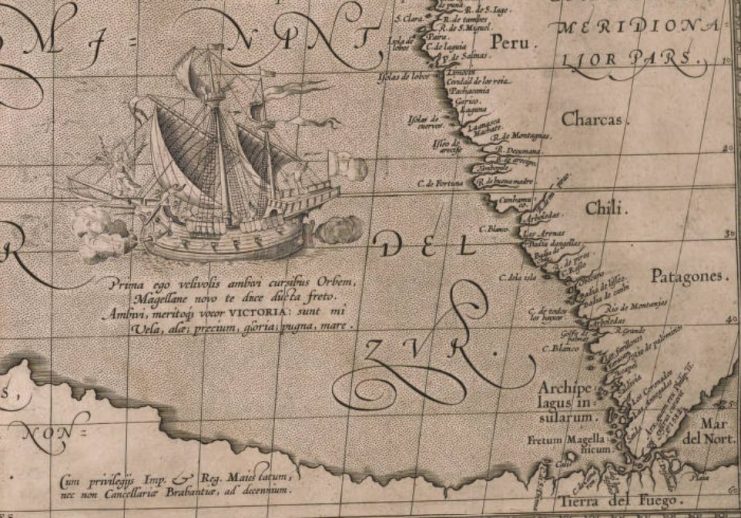
“I have gone ’round and rightly am I called Victory: my sails are my wings…” from the English translation of Ortelius’s Atlas (London, 1606). Bell # 1606 oOr.
My point here is not to disparage the Cadillac advertising campaign, which was certainly aesthetically pleasing, and which I find paradoxically compelling. While Cadillac commercials nowadays tend to emphasize wealth and fast-living, these artful advertisements make an interesting appeal to history. Wealth does come into it, and distasteful Eurocentrism, but so does contemplating one’s place in time and space. From a perspective nearly one hundred years later, I can find many reasons to question the view of history presented, but I still feel a bit of a thrill at being a smart consumer.



